BLM Updates Mitigation Policy to Ensure Sustained Prosperity of America’s Public Lands
On December 23rd, the U.S. Bureau of Land Management (BLM) announced an update of its mitigation policy, setting stronger and[…]
Read moreDedicated To People, The Planet, and All Its Inhabitants – Since 1996

On December 23rd, the U.S. Bureau of Land Management (BLM) announced an update of its mitigation policy, setting stronger and[…]
Read more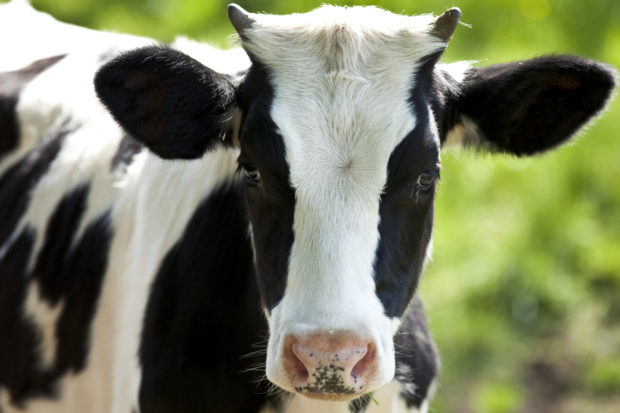
The rule prohibits certain cruel practices like tail docking of cattle, the transportation of sick, injured, or lame animals, and the mulesing of sheep (cutting the skin from the back legs and rump). It clarifies the requirement that animals cannot be tightly confined. Photo by iStockphoto
In its final major action for animals – this one perhaps promising to improve the treatment for millions and millions of animals in the coming years — the Obama Administration today finalized a rule that clarifies and updates the requirements of the “organic” label, establishing clear and meaningful protections for farm animals raised under that . . .
The post Breaking News: Obama Administration sets sweeping new standard for farm animal welfare appeared first on A Humane Nation.

By Jamie Fine
 California’s three major utilities – Pacific Gas & Electric (PG&E), Southern California Edison (SCE), and San Diego Gas & Electric (SDG&E) – have proposed plans to move Californians to electricity prices that vary with the time of day. Time-of-use pricing, or TOU, is critical to aligning our energy use with times when clean, cheap electricity powered by sunshine and wind is already available. TOU works because electricity is cheap when it can be powered by renewable resources and more expensive during times of peak (high) energy demand. As with any shopping, knowing prices empowers people to choose wisely to save money.
California’s three major utilities – Pacific Gas & Electric (PG&E), Southern California Edison (SCE), and San Diego Gas & Electric (SDG&E) – have proposed plans to move Californians to electricity prices that vary with the time of day. Time-of-use pricing, or TOU, is critical to aligning our energy use with times when clean, cheap electricity powered by sunshine and wind is already available. TOU works because electricity is cheap when it can be powered by renewable resources and more expensive during times of peak (high) energy demand. As with any shopping, knowing prices empowers people to choose wisely to save money.
New research from Lawrence Berkeley National Lab estimates TOU rates could collectively save customers up to $700 million annually by 2025 by getting the most out of our solar and wind resources. They find that absent TOU rates, we will waste up to 12 percent of existing renewable generation capacity, and solutions like TOU can reduce this waste by six-fold. We at Environmental Defense Fund (EDF) estimate that if this clean electricity were instead provided by natural gas power plants, it would generate 8 million additional tons of greenhouse gas pollution each year. Burning gas when we could instead rely on clean energy would dramatically impede the 11 million tons per year of greenhouse gases we need to eliminate from our economy to reach California’s 2050 environmental goals.
Testing TOU
The three big utilities are half-way through “opt-in” pilot programs that test these new rates. They’ve just submitted plans to the California Public Utilities Commission to test automatically switching some people to TOU in 2018, leading up to a complete roll out in 2019. TOU rates will work for most customers right away, reducing their bills and providing new opportunities to save money. Further, people can always opt out of the program.
However, the utility plans present an unnecessarily high risk of raising people’s bills during summer months, the reasons for which are explained below. To address this, the utilities will provide bill protection to everyone during their first year on TOU pricing ‒ guaranteeing no one will spend more than they would have if they had stayed on their old rate. Nevertheless, the plans must be designed to give customers actionable ways – not just measurements and band-aides – to manage potentially high summertime bills that could result if people don’t know how to switch the times they use electricity.
Like Clockwork: California Utilities Should Embrace Clean Energy Solutions when Testing Time-of-Use…
Click To Tweet
EDF is pushing the utilities to prevent these problems by testing clean energy tools, like demand response and storage, along with customer education that can ensure comfort and affordability. The good news is that LNBL’s research and other studies indicate by moving California to time-based electricity rates we’ll reap significant economic and environmental rewards.
Ensuring a smooth transition to TOU rates
Looking closely at PG&E’s plan, we see that most people in hotter areas of the state would see their bills rise by at least $10 per month in summer months if they aren’t able to shift or reduce their energy use. Proven steps, like replacing old light bulbs with LEDs or cutting “energy vampires” (devices that pull electricity even when not in use or turned off), will save people money around the clock. Slight changes to use electricity when it’s cheapest, like precooling during sunny afternoons and running the dishwasher at off-peak times, will also help keep bills low.
While cautionary, this information also suggests there’s an opportunity to lower bills for everybody. PG&E’s analysis shows most people won’t see a big change in their annual electricity costs: 59 percent of low-income households which currently receive bill discounts will see reduced yearly electricity costs and 40 percent will see increases of less than $5 per month. For people who pay non-discounted rates, the numbers are similar: 69 percent will have annual bills that increase by less than $5 per month, with 31 percent expected to see bill decreases.
So how does this all work? First, it’s important to recognize that the utilities won’t be making any extra profits from TOU rates. Second, as TOU rates encourage strategies to line up our energy demand with cheap, clean solar and wind, we can rely on these assets more. This lowers the overall costs of providing reliable electricity relative to the current system, bringing down costs over the long-term for everybody. Third, TOU rates are part of a strategy to avoid the significant long-term costs of degrading our environment with harmful pollution from fossil fuels. And fourth, these rates will open new opportunities for market innovations that give Californians more control over their energy use. Utility estimates of bill impacts don’t include these benefits, but they should.
Helping TOU work for everyone
It’s critical that utilities test and implement strategies to help customers at risk of higher bills take advantage of new ways to manage their energy use. Put simply, the pilots should first test how to help people align their energy demand with times when solar power is abundant. They should then explore how to help all customers take advantage of clean energy solutions and become more flexible in their energy use. To further ensure TOU rates work for everyone, utilities and the California commission should do the following:
Utilities have these types of solutions on their radars. PG&E’s Director of Regulatory Relations, Sidney Dietz, said in a recent meeting with Commission staff, “Customers should be given a price signal that supports newer technologies like storage.” However, utilities are not acting on these words in the regulatory proceedings where it could make a real difference.
TOU pricing, if implemented with the right set of supports, has enormous potential to help us get the most out of our renewables, with the least cost, while offering Californians a way to save money. Our utilities should be taking the necessary steps to ensure TOU works for all.
22 December, 2016 – Reindeer could help to slow down climate change by grazing on Arctic tundra and leaving vegetation that reflects more solar energy back into space.
The post Reindeer eat to beat climate change appeared first on Climate News Network.
Read moreTuesday, January 3, 2017
Read moreThursday, December 22, 2016
Read more13 December, 2016 – First attempt to measure the volume of stuff created by humankind reveals that it is at least 100,000 times heavier than the global human population.
The post Human ‘technosphere’ weighs 30 trillion tonnes appeared first on Climate News Network.
Read moreOn December 15th, New York regulators approved plans by the state’s largest natural gas utility, National Grid, to pilot new[…]
Read more17 December, 2016 – Scientists now believe that the East Antarctic ice sheet could become unstable, a discovery with potentially serious global implications.
The post East Antarctic icesheet unsettles science appeared first on Climate News Network.
Read more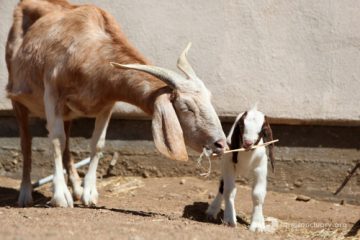

Mama Claire guides Erika through her first days of life!
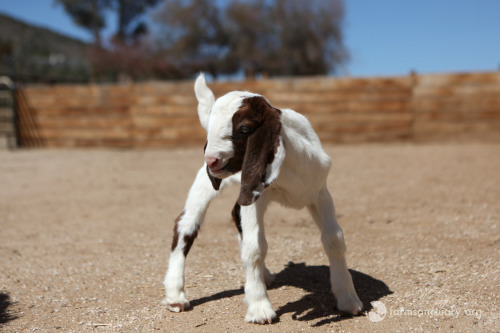
Baby Erika gets adjusted to her legs.
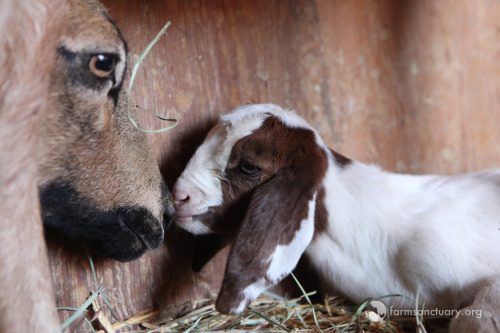
“Aunt Felicity” checks in on baby Erika.
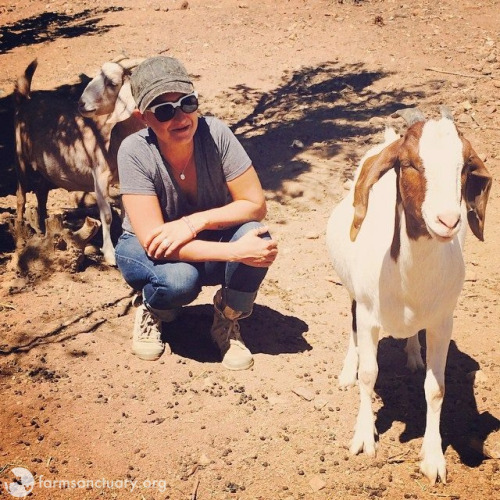
Facilities Coordinator Danielle Petrovich meets Claire the day before she started her internship.
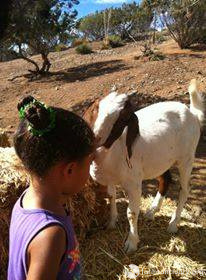
Erika shares some love with fellow “kid” pal, Nicole!
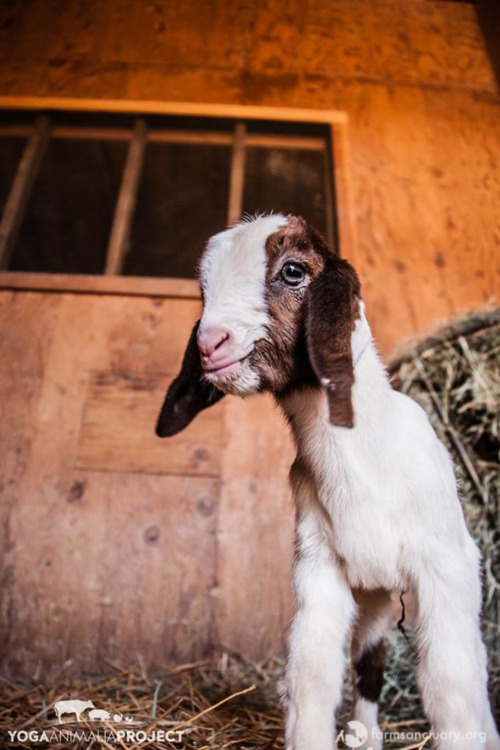
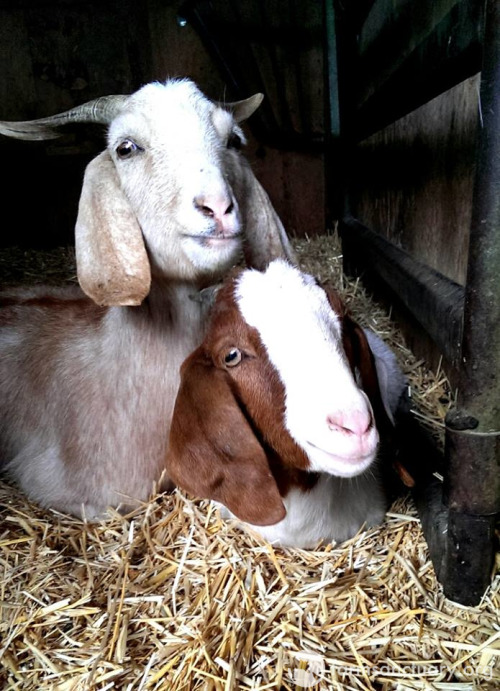

Actress Beth Behrs recently visited the farm, and was charmed by these two lovely ladies!

Claire only has eyes for her new pal, Beth Behrs.
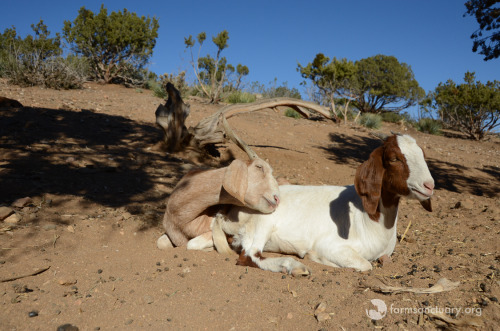
A day in the life of Claire and Erika — making it through each day together!
If there’s one thing guaranteed to visitors of Farm Sanctuary’s Southern
California Shelter, it is a likely glimpse of Claire and Erika goats snuggled
together. This mother-daughter pair is, indeed, inseparable. Erika is one of
the lucky few to have been born on the sanctuary, and therefore has only known
the good life.

Her mother, Claire, was rescued as part of a large-scale
cruelty case seizure by Los Angeles County animal control services from a
Southern California illegal backyard butcher in 2013. Claire was seized along with 13 sheep and a
calf. Most of the sheep were elderly, emaciated, terrified, and suffering from
a variety of ailments. All appeared to have been bred repeatedly. We suspect
the butcher used these aging sheep to breed lambs for his customers and
probably killed the babies within earshot, if not eyesight, of their mothers.
Twelve of the sheep, as well as the calf, were transported to
our Northern California Shelter to receive more intensive care and
rehabilitation. Claire goat, however, remained at the Southern California
Shelter along with a very special Barbados Black Belly sheep named Felicity, with whom
she shared a tight bond.
Coming from a backyard butcher, it was no surprise that quite
a few of the sheep were pregnant — and, as it turned out, Claire was pregnant,
too. Unlike most of the other pregnant sheep, however, this goat was a young
mother and this may have been her introduction to motherhood — at least, we hope
it was.
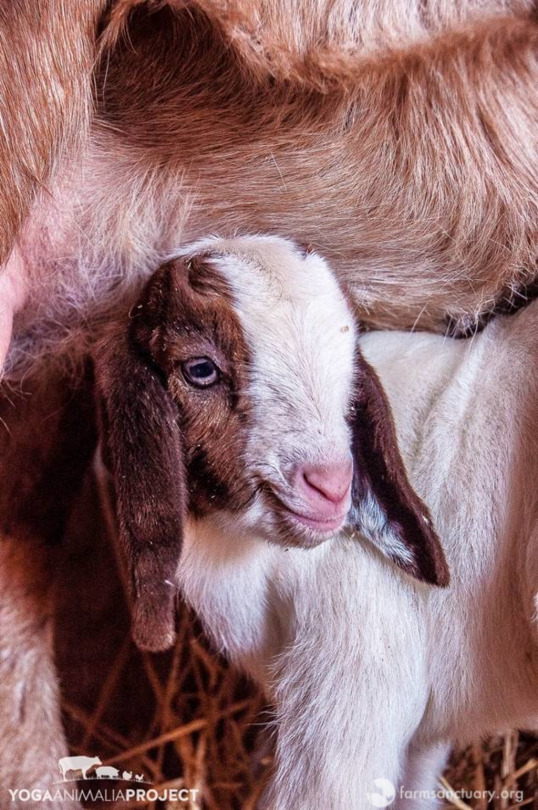
Usually when an animal is expecting to give birth, we isolate her from other animals to minimize any possible harm to the baby. But Felicity sheep was equal parts terrified
of us and bonded to Claire that they refused to be apart. Rather than cause either Felicity or Claire
undue stress from separation, we retained the status quo and monitored the
situation closely.
The day that Claire gave birth to her beautiful baby was
exciting indeed at the sanctuary. The
loving bond was instantaneous and strong.

Claire radiated love, and from that moment she
vowed to stay by her baby’s side. Erika, in turn — like any baby — dutifully followed her mother everywhere she went. Felicity quickly became infatuated with tiny Erika, too, and welcomed the honor of becoming Aunt Felicity. The three became one and were so bonded that
the staff referred to them collectively as “Flerika”.
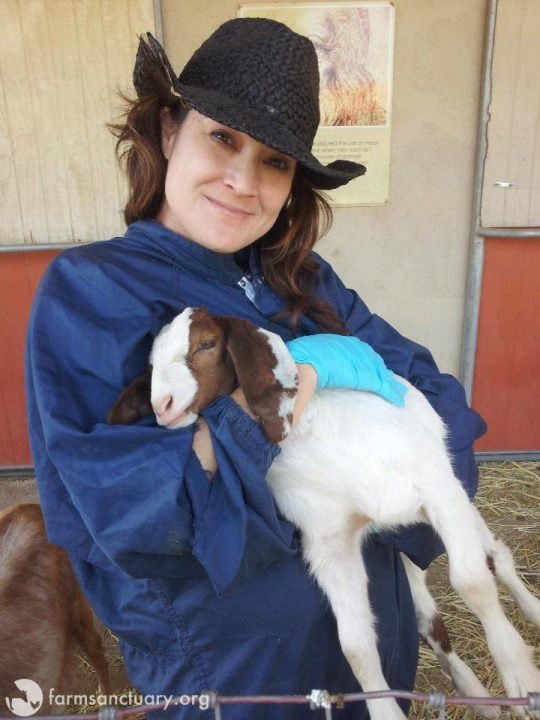
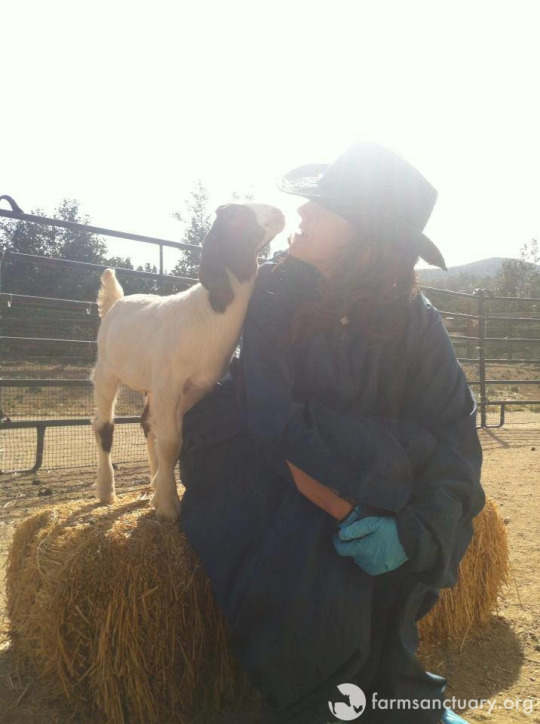
Acton Shelter Manager Alicia Pell gets to know our then-newest resident, Erika!
Though wary of our interference with her baby, Claire
reluctantly accepted that we had Erika’s best interest at heart when we
performed regular health checks. Luckily
for everyone, Erika was the perfect picture of health and monitoring and
maintenance was all that was needed from us.
As mothers worldwide can attest, Claire did all of the hard work in
rearing Erika; we were just along for the ride.
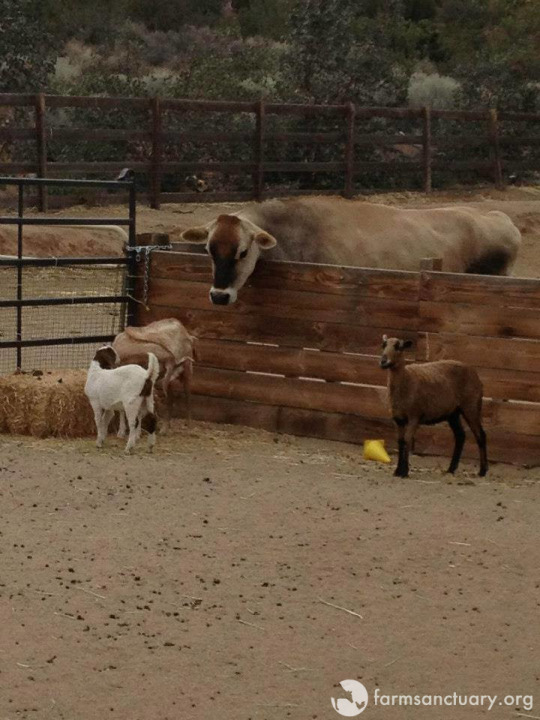
Before they were ready to join our main sheep and goat herd, “Flerika” lived in an enclosure adjacent to our cattle pasture. “Big brother” Paolo and the rest of the herd would check in on their new neighbors to make sure they were comfortable before the big “mooove”
When Erika grew big enough, she, her mom, and her
aunt — Flerika — were all introduced to the main goat and sheep herd. The trio was an instant hit among their
mates. And, unsurprisingly, they
remained a close knit trio, not straying far from one another at any
point. Whether in the barn, roaming the hillside, or at the feed trough, Flerika
remained connected.
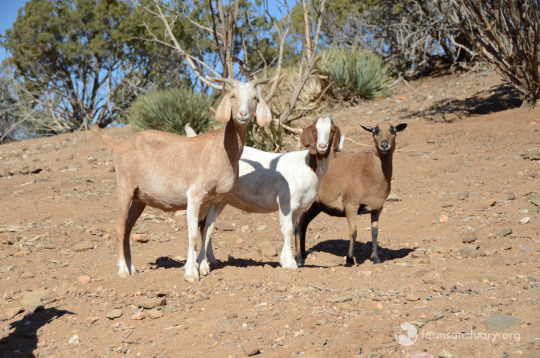
“Flerika” posing on the hillside together!
Mother and daughter particularly piqued the interest of our
debonair llama Yoda, who is particularly adept at and fond of babysitting — which we learned when he met Erika. Erika was the first kid he met, and he
was instantly smitten. Claire accepted
the lanky giant’s interest with grace, never questioning Yoda’s intentions with
her beautiful daughter. Instead, Claire
recognized Yoda as an ally in protecting and guiding Erika. When Erika was young, she and her mom followed
Yoda everywhere, roaming much farther onto the hillside than they would alone,
now that they had their fierce protector in tow. Felicity followed warily behind at a
respectable, safe distance. Erika would
look up to Yoda before venturing on, appearing to seek guidance as to whether
they should continue. Those interactions
earned Yoda the nickname “Uncle Yoda,” and, with that, Erika’s family grew.
At base, her primary relationship remained with her mother,
and so it still remains. Mother-daughter
bonds are special to begin, but there’s something exceptionally notable about
Claire and Erika’s closeness. Perhaps it’s because Claire was so young when she
gave birth and the two of them are quite close in age. It seems like they could be sisters, and they
are without a doubt best friends.
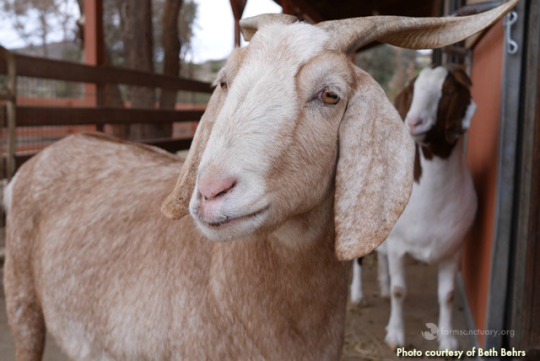
The love of Claire and Erika is never more apparent than when
they’re resting and sleeping. Every day
they nap near one another and usually with one of them resting her head on
the other. Whether occurring in the
barn, on the patio, or on the hillside, this spectacle never fails to melt our
hearts and the hearts of all of those lucky enough to bear witness to this love.
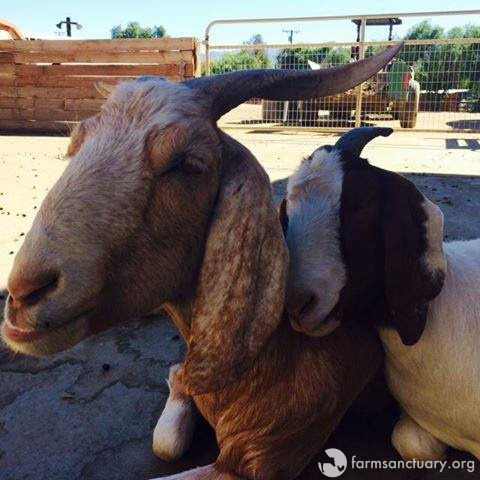
Claire and Erika’s signature move. These girls are never far apart, and their love is truly a sight to behold.
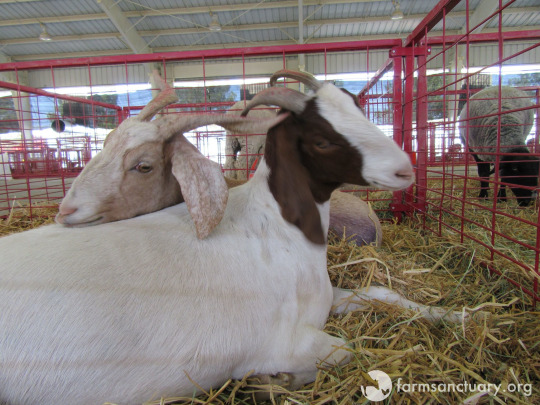
Claire and Erika’s relationship is a great comfort to them both. They are always there for one another, in good times and in bad. When we had to evacuate our Southern California Shelter due to the Sand Fire last summer, Claire and Erika stayed side by side, helping each other get through the stress of the move and an unfamiliar setting until we were cleared to head back home.
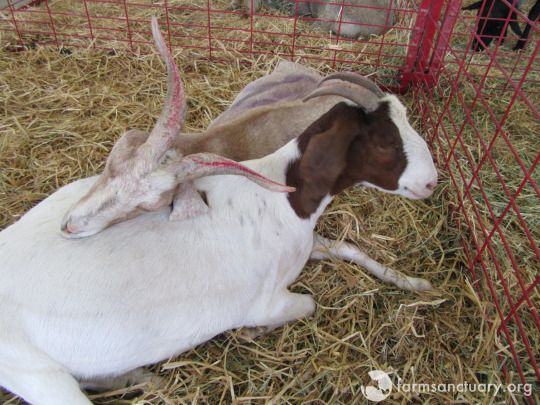
These girls always have each other’s backs!
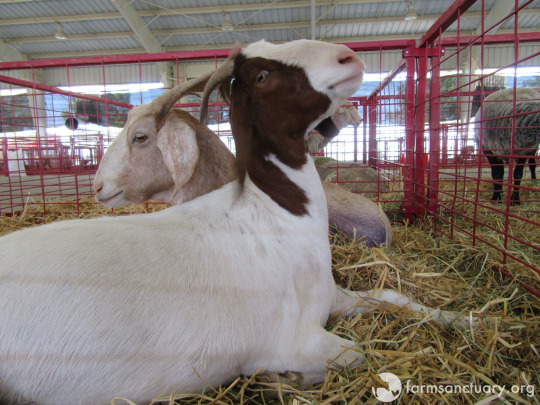
To this day, nearly four years after her birth, Erika is not
often found without her mother in close proximity. When they wander too far apart, Erika’s
bleats can be heard all over the sanctuary.
The doting and caring mother that she is, Claire responds to her daughter’s
cries and the two are swiftly reunited.
During routine health care checks, both Claire and Erika wait
patiently on the other side of the gate while the other has their hooves
trimmed and receives a full body check by the caregivers. They no longer act too
concerned — at this point they know the routine and that it’s nothing to be scared
of. But they do remain vigilant and watchful — patiently waiting, just in case — and
are always happy and relieved when they’re reunited.
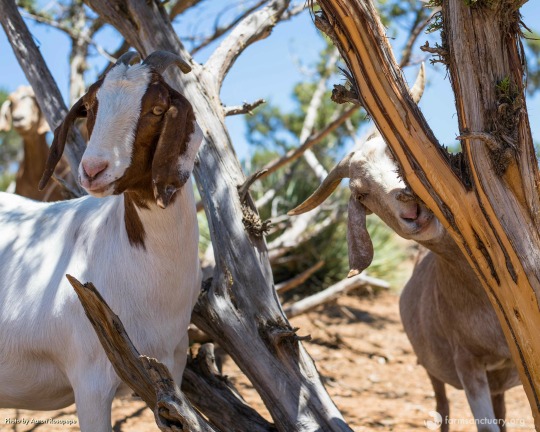
Nowadays, Claire and Erika lead the pack roaming the
hillside. Sometimes Yoda and Felicity
are in tow, and sometimes not. Claire is
the clear matriarch of the goat herd.
Paul Harvey, Vince, and Calvin often tromp around the hillside with
Claire and Erika. Erika and Paul Harvey
particularly enjoy palling around together and enjoy testing each other’s
strength.
In addition to goats, sheep, and one llama, Claire and Erika
also count many humanimals among their friends.
They’re often the first to greet staff members and visitors at the gate — usually
because they’re looking for treats. When
treats are not forthcoming, though, they gladly settle into being adored and
doted upon.

Claire and Erika ask for some love from their good friend Kim Kaspari. And we’re always happy to oblige!
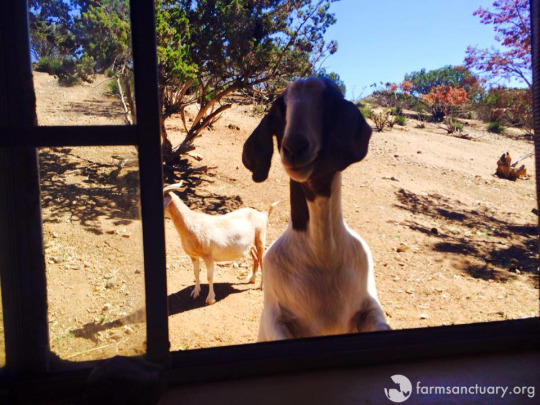
When all else fails, visit the humanimals in the office for some treats!
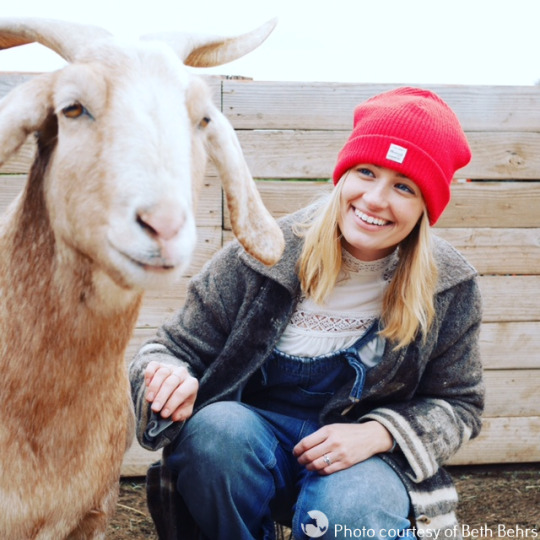
Claire spends some time with her new friend, Beth Behrs, who plays Caroline on CBS’s “2 Broke Girls.”
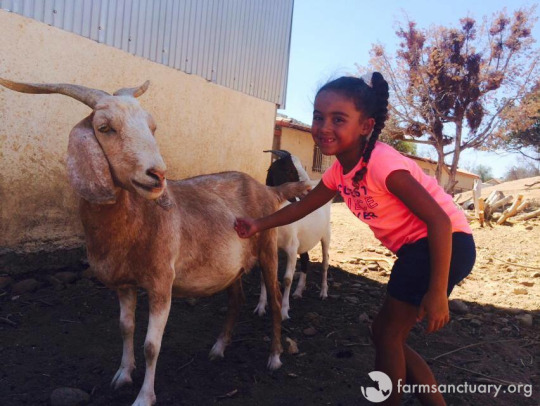
The girls are also quite fond of their “kid” pals! Here, Claire enjoys a back rub from her friend Michelle, while Erika looks on from behind.
All and all, Claire and Erika are great goat ambassadors,
demonstrating to every visitor at the sanctuary the strong and unbreakable bond
between a mother and her child. We’re so happy that these lucky girls will
always have each other to turn to and to rest their heads upon.
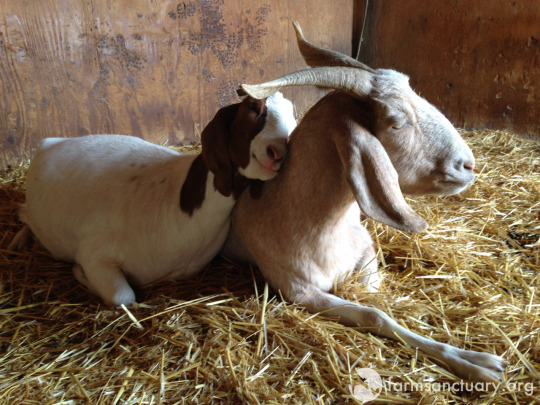
Please share Claire and Erika’s story. Together, we can raise awareness that goats like them are each someone, not something. With your support, we can continue to promote compassionate vegan living through rescue, education, and advocacy efforts. A compassionate world begins with you!
Read more